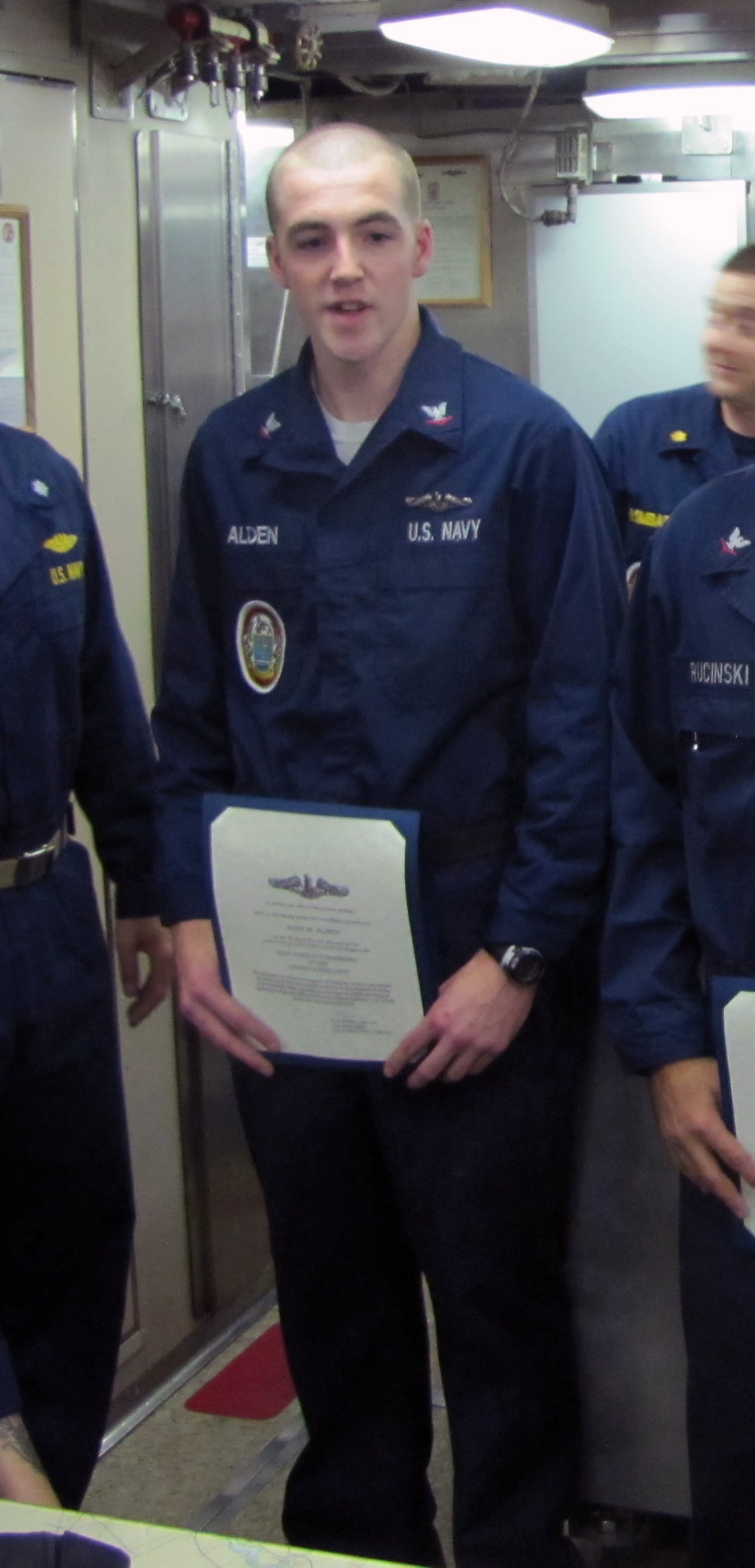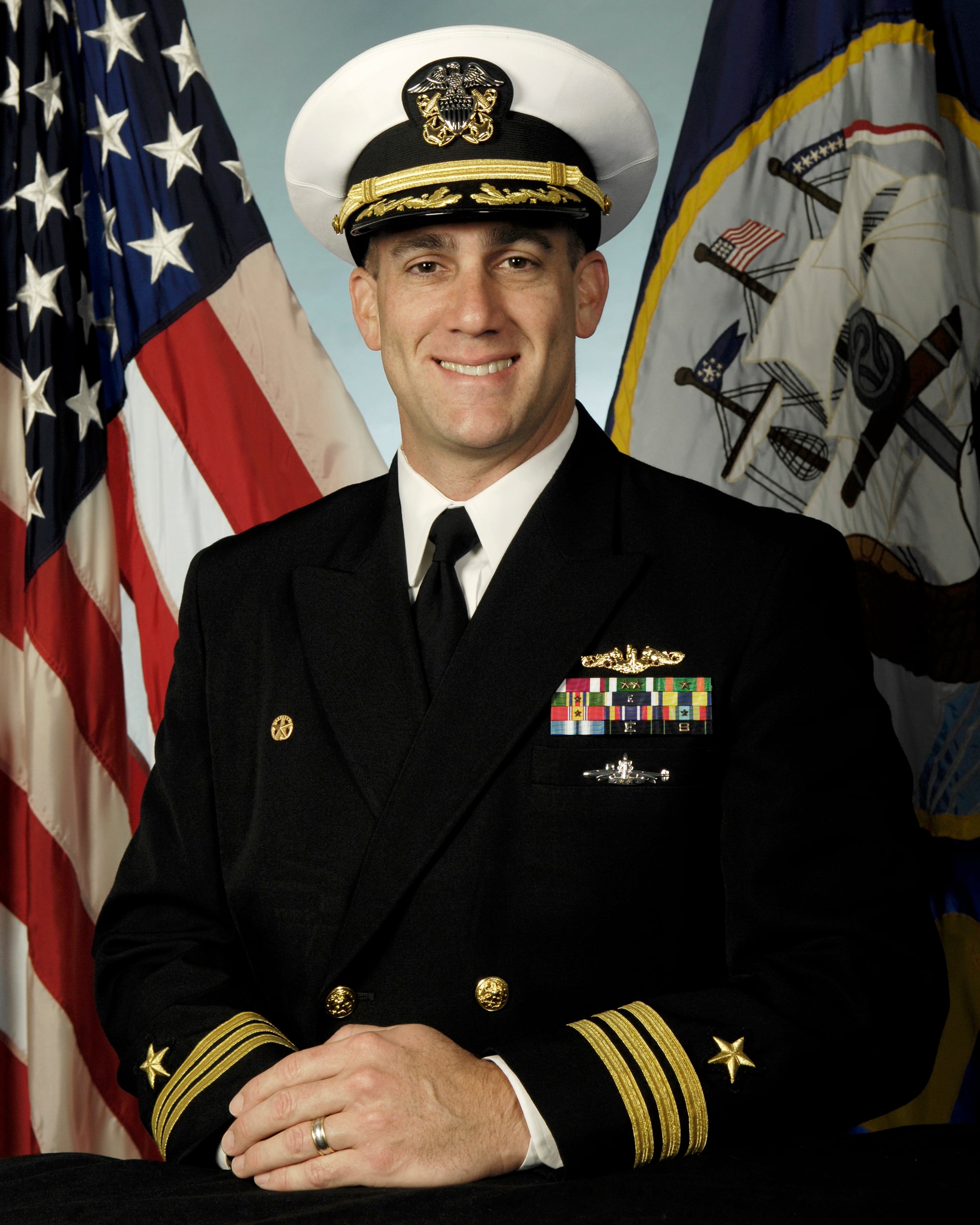Jon Alden reported to the ballistic missile submarine Alaska's Blue Crew in 2009 as a seaman. Six years later, he left as a chief.
How did he rise through the ranks so quickly?
in How did Chief Missile Technician (SS) Jon Alden report to USS Alaska(SSBN732)(BLUE) as a Seaman in August, 2009 and depart six years and two months later as a Chief? As with most successful naval service, it took both talent and a little luck.
Chief Missile Technician (SS) Alden, 25, is an excellent example of what it takes to thrive in the force at a rapid and steady clip. For current Seamen and Petty Officers striving to become a Chief, MTC Alden serves as an excellent example to follow in order to take control of the "talent" part of your equation for success in the Navy. Based on his top 10 percent performance in "C" school, after two months on board, then-Seaman Alden moved up to advanced to MT3 through the accelerated advancement program.
The remainder of his shipboard success boils down to was based on five fundamentals:
1. Qualify, qualify, qualify. After 16 months on board, At the 1.4-year point, MT3 Alden qualified as At-Sea Fire Control Supervisor, a watch normally stood by MT1s. Just six months later (before his two year mark) he achieved his senior-in-rate qualification of Launcher Supervisor. MTC Alden qualified for "Submarines" in 10 months, earning his pin two months ahead of schedule. Most importantly, he rapidly qualified for all subsequent watches and did not stop until qualified as the Diving Officer of the Watch, the senior watch onaboard for enlisted personnel. Prospective chiefs should stand the watches a chief stands.

Alden's focus on qualifications didn't stop when he earned his dolphins. That dedication helped him rise through the ranks rapidly.
Photo Credit: Courtesy Cmdr. David Forman
2. Master your trade.On multiple occasions, his depth of technical knowledge, and his confidence in that knowledge, proved critical to his success. As an MT3 assigned as a Missile Tube Team Member, Alden's skills were MT3 was noted by an inspection team as "the best they’d seen in four years." Additionally, when the ship experienced an actual hydraulic rupture, MT3 Alden applied used his knowledge to quickly isolate the rupture and restore the missile system to full capability; the his accurate system knowledge and promptly isolated the rupture to restore the missile system to full capability (the missiles were safe the entire time). For his timely, accurate and brave action, MT3 Alden was awarded a Navy Achievement Medal.
3. Lead, and LEAD WELL. At his first opportunity as an MT1, MTC Alden became the Leading Petty Officer of MT Division. Obtaining this opportunity to lead is not a rubber stamp to advancement. You actually need to invest your time in the personal success of the Sailors in your division: help them qualify, help them advance, and help ensure their personal lives are in order so they are ready to go to sea. fe is in order so they are ready to go to sea. If you do this, Doing this also helps you feature then you will have hard metrics to list in your evaluations. MT1 Alden’s Sailors achieved 100 percent retention, 50 percent advancement, one Junior Sailor of the Quarter and one Blue Jacket of the Quarter. He clearly led well.
4. Work outside your rating. Find a command-wide collateral duty and make your program excel. Show your command, and therefore the Chief Selection Board, that you know how to manage large programs. After two years on the Alaska, t the two-year point, then-MT3 Alden volunteered to be the Recreation Committee Vice President. Shortly thereafter, he became the Ship’s Calibration Coordinator. As an MT1, he became the Education Services Officer. Though Many collateral duties may not be exciting, but they are necessary to maintain the resilience of our Force so that when we are called to fight, we are ready. Chiefs lead outside of their specific rate, and help command-wide programs run, upcoming Chiefs should too.
5. March to the beat of your own drum, but be sure your cadence is faster. The Navy has standards, but to rapidly advance, your personal onesstandard must be higher. The Navy is full of wonderful leaders and mentors at all levels, but there are exceptions. If you want to advance quickly, you will need to effectively deal with a few leaders that could use some improvement. Don’t allow them to slow your progress or undermine your motivation. When MTSN Alden reported to the crewAlaska (Blue), he was not impressed with his first LPO. But since he did not rely on others for his motivation, MTC Alden never lowered his standards or and sustained his superior performance. Never sacrifice the qualitysuccess of your service to someone else’s shortcomings. Upcoming Chiefs should have personal standards higher than those around them.

Cmdr. David Forman, Alden's CO on the Alaska, took command of Alaska's Blue Crew in March 2015.
Photo Credit: Courtesy Cmdr. David Forman
On the day before he went through his Chief Petty Officer pinning ceremony, MTC Alden buried his white cover at sea as a symbolic gesture of his transition to Khaki. Letting go of his white cover was significant for MTC (Select) Alden for reasons that epitomize why he made such an impact and advanced performed so well and advanced so quickly. When he would returned home to visit his family in his crackerjacks, his white cover reminded his aging grandmother of her own deceased husband (MTC Alden’s Grandfather), the World War II submarine veteran who was Alden's grandfather WWII submarine veteran. When her senility led her to mistakenly call her grandson "Alfred," his grandfather's name, Alden's caused her to refer to MTC as "Alfred," his grandfather’s name, MTC’s commitment to uphold his family’s legacy was nearly overwhelming. His pride of service makes the Navy far more than a job. For MTC Alden, it’s a lifestyle.
Some people criticize the Navy as an over-sized bureaucracy that rewards time of service more than talent of service. In the case of Chief Alden, the system worked perfectly and the top talent was advanced. If the same applies to you, stay focused on your passion and you will become a Chief.
The rest of the story. Alden is now an instructor at Trident Training Facility, Kings Bay, Georgia. He applied to the Limited Duty Officer program and will see the results in February 2016. As he continues his service as a Chief Petty Officer, he will train and mentor young MTs and help prepare crews to master their mission of strategic deterrence.
Cmdr. David Forman is the commanding officer of the Blue Crew of ballistic missile submarine Alaska.





